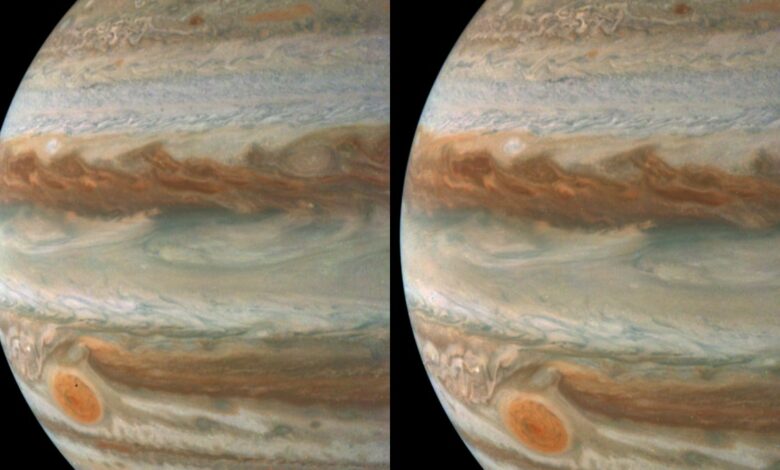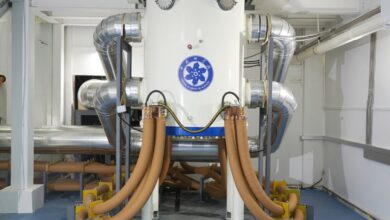NASA’s Juno shows the storms of Jupiter and the moon Amalthea up close

NASA’s Juno spacecraft has delivered breathtaking images of Jupiter, highlighting the planet’s swirling, multi-colored storms and unique moons. During Juno’s 66th short flight on October 23, the spacecraft approached the planet’s polar regions and captured close-up images of the fifth-largest moon, Amalthea. The raw images collected by JunoCam have since been processed by citizen scientists, who have enhanced colors and contrasts to reveal Jupiter’s atmospheric details in a new light.
Spectacular details of Jupiter’s storms revealed
Citizen scientist Jackie Branc processed one of Juno’s most striking images, showing a region on Jupiter called a Folded Filamentary Region (FFR) located near the planet’s subpolar regions. FFRs are known for their complex cloud patterns, including white waves and fine, thread-like filaments. This recent image captures Jupiter’s stormy atmosphere with a focus on these fine details, giving both scientists and the public a vivid view of the planet’s dynamic weather systems.
Juno’s data, available to the audience online, enthusiasts and researchers can adjust image characteristics such as contrast and color balance. This joint effort has enabled a range of perspectives on Jupiter’s atmospheric bands, turbulent clouds and powerful vortices.
Amalthea: a close-up of Jupiter’s unique moon
Juno also captured images of Amalthea, a small, potato-shaped moon with a radius of just 52 miles (84 kilometers). In images processed by Gerald Eichstädt, the white balance was adjusted to distinguish Amalthea from the blackness of space, rendering the moon in stark relief. This view of Amalthea, with its rugged, irregular shape, contributes to our understanding of Jupiter’s complex satellite system.
The Juno mission was launched in 2016 and was originally scheduled to end in 2021, but the mission has been extended and will end in September 2025. When the mission ends, Juno will plunge into Jupiter’s atmosphere, marking the end of its successful exploration journey . .




